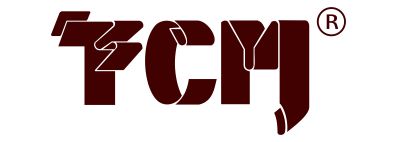Specification HOME > About Bobbins > Specification
Bobbin Types
The bobbins in this catalog have been manufactured to match the industry's popular ferrite, powder and lamination core shapes and sizes. All the critical bobbin characteristics are included in these pages and on the drawing for each bobbin. The best shape is usually a trade-off between heat dissapation, magnetic shielding, cost, and the ease of winding and assembly.
Bobbin Material
All these bobbins are plastic molded. The specification for each plastic material is included in these pages and on the bobbins drawings. We have included each plastic material's manufacture and UL file number so detailed material performance data can be found on-line. The plastics used in bobbin molding fall into two main groups, thermoplastic and thermoset.
Thermoplastic materials are the most widely used in bobbin molding. Thermoplastic bobbins are inexpensive and capable of meeting many agency heat and flammability requirements when mixed with mineral, Quartz, or glass fillers.
Thermoset materials are more expensive but offer the greatest strength and temperature stability. As solder temperature go up, thermoset materials are more popular.
UL Class and Temperature Rating
Underwriters Laboratory (UL) is a non-profit private agency that regulates public safety for a variety of products including electronic devices. In plastic moldings for the transformers and inductors, UL regulation are focused on the integrity of the insulation system so a short circuit does not occur. This is done by first ensuring the insulation is sufficient, and then verifing that it will not degraded over time. Once tested and approved, these transformer subcomponents, including plastic moldings, become part of a UL Recognized Insulation System specific to an operating temperature or class There are several temperature classes that cover working environments ranging from an office, to a truck engine compartment. Each temperature class will have different performance criteria for the plastic molded bobbin.
UL Class |
A |
B |
F |
H |
N |
R |
S |
Max Temp Rating |
105°C (211°F) |
130°C (266°F) |
155°C (311°F) |
180°C (356°F) |
200°C (392°F) |
220°C (428°F) |
240°C (464°F) |
UL94 Flammability Rating
In addition to temperature class regulations, a plastic's ability to resist burning, or its flammability rating, is also a critical factor. Underwriter's Laboratory (UL) has specific flammability requirements depending on the working environment of the finished product. Referred to as UL94, this regulation classifies plastic materials on their ability to self extinguish when put in contact with, and then removed, from an open flame. In most applications, the highest level of UL94VO is preferred.
UL94 Rating |
VO |
V1 & V2 |
V5 |
HB |
Flammability Specifications |
Will support combustion for up to 10 seconds and self extinguishes when tested under specific conditions. |
Will support combustion for up to 30 seconds and self extinguishes when tested under specific conditions. V2, dripping melted material allowed. |
Will support combustion for up to 60 seconds after 5 test burnings of 5 seconds each and self extinguishes when tested under specific conditions. |
Will support combustion and may not self extinguish when tested under specific conditions. |
RoHS Compliance
Restrictions on Hazardous Substances (RoHS) is a European inspired regulation that limits 6 harmful ingredients for electronic components. Flame retardants in the plastic material and lead in the tin/lead (Sn/Pb) plated terminals are included on the list of harmful ingredients. Most plastic manuracturers and re-formulated their plastic to meet RoHS and terminals are now lead free. All bobbins that meet the requirements of RoHS are clearly marked in these pages and on the drawing for each bobbin.
| Core Shape Eval. | HM |
EP |
ER |
POT |
EFD |
EPC |
PQ |
EE/EF |
US LAM |
ETD |
| Magnetic Shielding | Good |
Great |
Good |
Great |
Fair |
Fair |
Fair |
Poor |
Poor |
Poor |
| Heat Dissipation | Poor |
Poor |
Fair |
Poor |
Good |
Good |
Good |
Great |
Great |
Great |
| Winding Flexibility | Good |
Good |
Good |
Fair |
Good |
Good |
Good |
Great |
Great |
Great |
| SMD or Through Hole | Both |
Both |
Both |
TH |
Both |
Both |
TH |
Both |
TH |
TH |
| Winding Cost | Moderate |
Moderate |
Moderate |
Moderate |
Moderate |
Moderate |
Moderate |
Low |
Low |
Low |
| Relative Bobbin Cost | Moderate |
Moderate |
Moderate |
Moderate |
Moderate |
Moderate |
High |
Low |
Low |
High |
| Ease in Gapping | Moderate |
Difficult |
Moderate |
Difficult |
Moderate |
Moderate |
Moderate |
Easy |
Easy |
Easy |
|
Typical Applications Linear Transformers Communications/RF Switch Mode Power Curr. Transformer |
Unlikely Yes Possible Possible |
Unlikely Yes Unlikely Possible |
Unlikely Yes Possible Possible |
Unlikely Yes Unlikely Possible |
Unlikely Possible Yes Possible |
Unlikely Possible Yes Possible |
Unlikely Possible Yes Possible |
Yes Possible Yes Possible |
Yes Unlikely Yes Possible |
Possible Possible Yes Possible |






